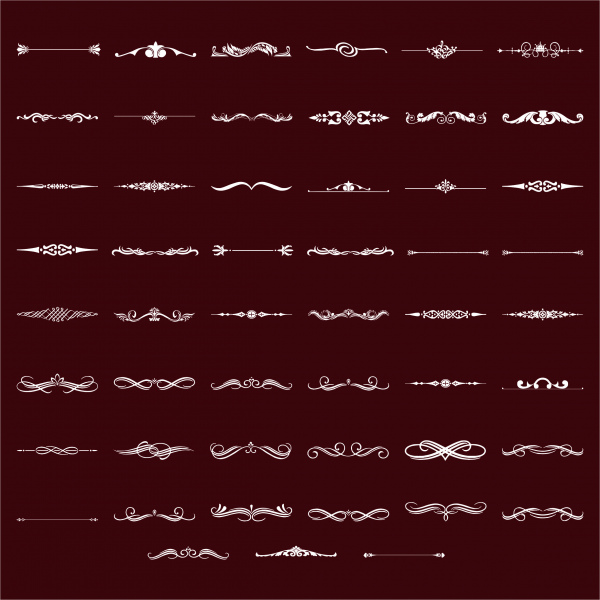Table Of Content

You’ll also learn about the types of grid systems and how to effectively use grids to improve your work. Gestalt is the reason that we can see a square, circle and triangle even though the lines are not complete. We see the whole formed by the dotted lines first, before perceiving the separate dotted lines in each of the images. The subtractive mix of colours in paint and print produces the CMYK colour system. The additive mix of colours on digital screens produces the RGB colour system. Differences in values create clear designs, while designs using similar values tend to look subtle.
Want to learn step-by-step how I built my Niche Site Empire up to a full-time income?
Form and space aren't interchangeable but changing one will affect the other. You have to keep in mind all these characteristics while adding color to any part of an element. RGB colors are produced by mixing primary colors together like red, green, and blue. On the other hand, CMYK systems stand for cyan, magenta, yellow, and black. These colors are to reduce the light that is reflected on a white background. To summarize, every piece of work uses point, line, shape, form, and color elements.
White space
Indigeneity a key element to Centennial's $112M A-Building design - Daily Commercial News
Indigeneity a key element to Centennial's $112M A-Building design.
Posted: Tue, 26 Sep 2023 07:00:00 GMT [source]
You can also experiment with text, icons, or textures as framing devices around objects. Texture in design is usually an implied feeling of a tangible surface taken from real life. Although we can’t experience these textures in a tactile way, using these kinds of effects recreates and brings life to your composition. The only way to make texture tangible again is to use textured paper like felt or velum for printed designs.
COLOR
Design is 'key element' for future McLarens, says boss, including incoming SUV - Top Gear
Design is 'key element' for future McLarens, says boss, including incoming SUV.
Posted: Wed, 20 Mar 2024 07:00:00 GMT [source]
The inspiration for the newest luxury electric SUV started with the lowly minivan. Have an idea for a project that will add value for arXiv's community? Speed up creating your how-to guides, training documentation, and interactive product demos with the...
Easiest Online Businesses to Start: Your Ultimate Guide
As a design principle, negative space is essential because it gives the elements in your composition room to breathe. Without white space, pages look cluttered and are hard to navigate. Use proportion to create visual interest by drawing the viewer’s eye to particular visual elements within your designs. Learn 11 core principles of design and how to apply them to your graphic design work.
How to Add Music to a Video in 4 Steps: Renderforest Guide 101
However, a lot of the premium features, including maximum range and power, will come in higher priced models. The minivan-inspired details, though, are standard; space, itself, is a luxury. There is also a glass panel on the center console covering a flexible storage space, a detail that Jenkins is especially proud of.”It’s our own little space study,” he said. A frosted glass retractable top hides the cup holders, wireless phone charge pad and a tray that slides forward back; underneath are bento boxes to organize your things. Jenkins showed particular delight at the boxes because they can be moved around as needed and even removed to be cleaned. Inspiration in the Lucid Gravity came from other places, too, Jenkins said.
Want to Learn More About UX Design & Boost Your Skills?
It’s a great way to grab attention, control the visual flow, and keep folks engaged. The principles serve as guidelines for creating visually appealing and effective designs. The exact number and naming of these principles can vary, as design is a field subject to interpretation and evolving trends.
Repetition and Pattern
Today, we show you how to be more effective in creating visual content that is both appealing and informative. Direction is an element of design that establishes the general mood and atmosphere. It creates the illusion that there is movement within the design. Scale and proportion are used to indicate the exact size of an object or to emphasize the difference in size of two objects found on a particular visual presentation.
The Key Elements & Principles of Visual Design

As an artist uses paints and brushes to fill out a canvas, designers use design elements to create their designs. The elements of design are fundamental components that form the basis of any visual composition. They include lines, shapes, forms, space (negative space), colors, values, and textures. These elements work together to create harmony, convey messages, and evoke emotions in a design. All design elements and principles—typography, colors, images, shapes, patterns, etc.—carry a visual weight.
A design where you can see different elements automatically has some level of contrast. It’s important to familiarize yourself with the most common eye movement patterns, F- and Z-patterns, and the layer cake pattern. F- and Z-patterns are more common on image-heavy pages, while the layer cake pattern is facilitated by lots of text with headings and subheadings.
The cornerstone of great design is achieving a state of balance. Making sure all of your design elements flow together nicely is a great way to give your work a professional look and feel. Balance is the most common and most important principle of every design. Rhythm lets you pick a style where you can consistently deliver valuable information to customers with a smaller learning arch. It creates a sense of movement for the viewer by repeating patterns, phrases, and shapes. White space is also called negative space, as it isn’t always white.
You need to understand the significance of using negative space. Your design can show a feeling of visual harmony, clarity, and visual hierarchy within compositions by purposefully using negative space. Designers use pure colors to convey a specific point of view, depth, light, and emotion.
The effect is achieved by manipulating elements (like color, shape, and size) to make specific parts of a design stand out. The principle of design used to govern the usage of white spaces comes into play with minimalist designs in a significant way. It can create balance, improve the standard or level of design, and reduce clutter. Designs with more white spaces are referred to as “clean” pieces of work.
By mastering these elements, designers can expand their creative possibilities and deliver impactful visual experiences. Welcome to the world of design, where creativity and aesthetics come together to create captivating visuals that leave a lasting impression. As animation becomes a more significant part of digital design, there's an argument that movement should be classed as a graphic design element. Animation helps with audience engagement and is a valuable tool for websites and apps. If actual animation isn't possible, form, colour and line can be used to recreate the feeling of movement.
Pattern also helps differentiate things, and color and contrast make things stand out and blend in. In this simplistic yet elegant design, a contrast in colors adds depth of field and distance between objects. It can highlight differences through close association or make things stand out in juxtaposition. Also known as brightness, value determines how light or dark colors are. It creates depth and mood by showing how light and shadow fall on objects. Shapes are two-dimensional and can range from simple organic shapes to one's more complex, like geometric shapes.

No comments:
Post a Comment